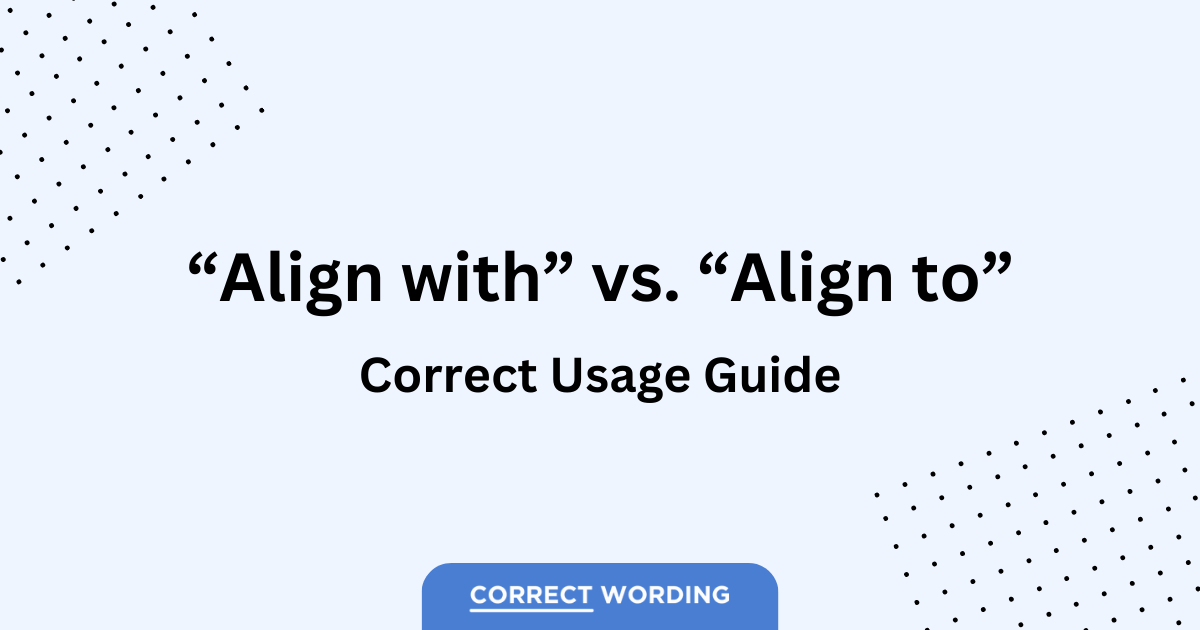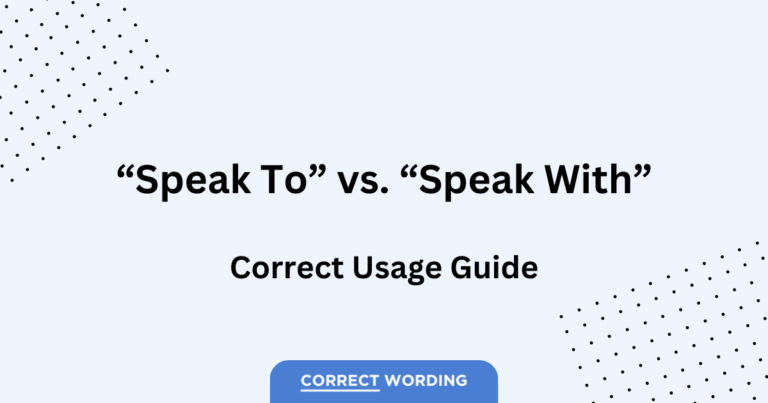“Align With” vs. “Align To” – Selecting the Appropriate Preposition
The choice between “align with” and “align to” can be subtle yet impactful in conveying the precise relationship between objects, ideas, or values.
Understanding the nuances of these phrases is essential for effective communication.
Quick Summary
“Align with” is commonly used to indicate agreement or conformity with a particular set of rules, standards, or beliefs. “Align to” is less commonly used and typically refers to positioning something in accordance with a specific point or guideline.
“Align With” vs. “Align To” – Which is Correct?
Both “align with” and “align to” can be correct, depending on the context. “Align with” is generally used when discussing alignment in terms of agreement or alliance. “Align to” is more often used when referring to adjustment or calibration towards something. Here’s a guide:
| Phrase | When to Use | Example |
|---|---|---|
| Align with | When expressing agreement or conformity | Our goals align with the company’s mission statement. |
| Align to | When referring to adjustment or orientation | We need to align the satellite dish to the southern sky. |
How to Use “Align With”
“Align with” is used when you want to express that something is in a state of agreement or in line with something else, such as principles, goals, or policies. Here are examples of how to use “align with”:
“Our teaching methods align with the latest educational research.”
“The new regulations align with international standards.”
How to Use “Align To”
“Align to” is less frequently used and is often related to the physical positioning of an object or the adjustment of one thing to match or correspond to another. Examples of “align to” usage are:
“The technician is aligning the printer to the edge of the table.”
“The app’s features need to align to the user’s preferences.”
Practice Exercises
Choose the correct phrase to complete the sentences:
- The company’s environmental policies _ (align with/align to) the latest sustainability practices.
- You will need to _ (align with/align to) the guidelines provided in the manual.
- Their political views _ (align with/align to) those of the green party.
- The graphic designer was asked to _ (align with/align to) the text to the margin.
- The team’s strategy did not _ (align with/align to) the coach’s instructions.
Answer Key:
- align with
- align to
- align with
- align to
- align with
Conclusion
Whether you use “align with” or “align to” depends on the context of your sentence. “Align with” is the right choice when referring to agreement or compatibility, while “align to” is suitable for discussing orientation or calibration.
Understanding the difference between these phrases will help you communicate your thoughts with precision and clarity.


